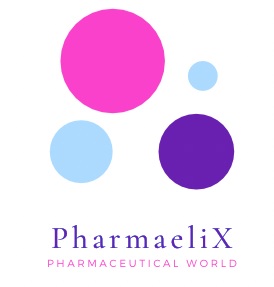Validation is a term widely used in all manufacturing industries. However, it is the most important aspect of the Pharmaceutical Industry. In the pharmaceutical industry, it refers to the process of demonstrating and documenting that a specific process, equipment, method, or system consistently produces a result that meets the predetermined specifications and quality standards. This is done to ensure that the drug products manufactured are safe, effective, and meet regulatory requirements.

Validation in pharmaceuticals typically involves the following steps:
- Establishing protocols and standards.
- Conducting risk assessments to identify critical process parameters.
- Performing qualification activities to confirm that equipment and systems are capable of performing as intended.
- Conducting process studies to demonstrate that the process is consistently capable of producing the desired product quality.
- Monitoring and maintaining validated systems through ongoing performance monitoring and periodic revalidation.
Pharmaceutical companies are required to adhere to strict validation standards set by regulatory agencies such as the US FDA, European Medicines Agency (EMA), and World Health Organization (WHO).
Definition of Validation
The definition of Validations is “Establishing documented evidence that provides a high degree of assurance that a specific process will consistently produce a product meeting its pre-determined specifications and quality attributes.”
It often includes the qualification of systems and equipment. However, it is a requirement of Good Manufacturing Practices and other regulatory requirements. Since a wide variety of procedures, processes, and activities need to be validated, it is divided into a number of subsections including the following:
Types of Validation
In the pharmaceutical industry, there are several types of validation that are commonly used, including:
- Process validation: Demonstrates that a specific process consistently produces a product that meets the predetermined specifications and quality standards.
- Equipment validation: Verifies that the equipment used in the manufacturing process is capable of performing as intended.
- Cleaning validation: Demonstrates that the cleaning process used to remove residual substances from equipment and surfaces is effective and meets regulatory requirements.
- Computer system validation: Verifies that the computer systems used in the manufacturing process meet regulatory requirements and function as intended.
- Method validation: Demonstrates that the analytical methods used to test the product meet regulatory requirements and provide accurate and reliable results.
- Sterilization validation: Demonstrates that the sterilization process used to remove or kill all viable microorganisms from a product is effective and meets regulatory requirements.
- Packaging validation: Verifies that the packaging materials and processes used to package the product meet regulatory requirements and provide adequate protection during storage and transportation.
Each type has its own specific requirements, protocols, and methods, and companies are required to follow these to ensure that their products are safe, effective, and meet regulatory requirements.
Similarly, the activity of qualifying systems and equipment is divided into a number of subsections including the following. Refer to FDA / Wikipedia.
- Design qualification (DQ)
- Component qualification (CQ)
- Installation qualification (IQ)
- Operational qualification (OQ)
- Performance qualification (PQ)
Background
The concept was first proposed by two Food and Drug Administration (FDA) to improve the quality of pharmaceuticals. The first activities are focused on the processes involved in making pharma products. However, it quickly spread to associated processes including environmental control, media fill, equipment, sanitization, and purified water production.
Why it is required
This will provide a high degree of assurance that every step, process, and change shall properly evaluate before its implementation. Testing a final product sample is not considering sufficient evidence that every product within a batch meets the required specification
What is VMP
The Validation Master Plan (VMP) is a document that describes how and when it will execute in a facility. Even though it is not mandatory, it is the document that outlines the principles involved in the qualification of a facility, defines the areas and systems to be validated, and provides a written program for achieving and maintaining a qualified facility with validated processes.
It is the foundation for the verification program and should include process, facility, and utility qualification, equipment qualification, cleaning, and computer system validation (CSV). The regulations also set out an expectation that the different parts of the production process are well defined and controlled, such that the results of that production will not substantially change over time.
Stay tuned here for never-before Pharma articles – Good HPLC Practices for accurate analysis, Best Pharmaceutical Water Fundamentals 2023

Trackbacks/Pingbacks